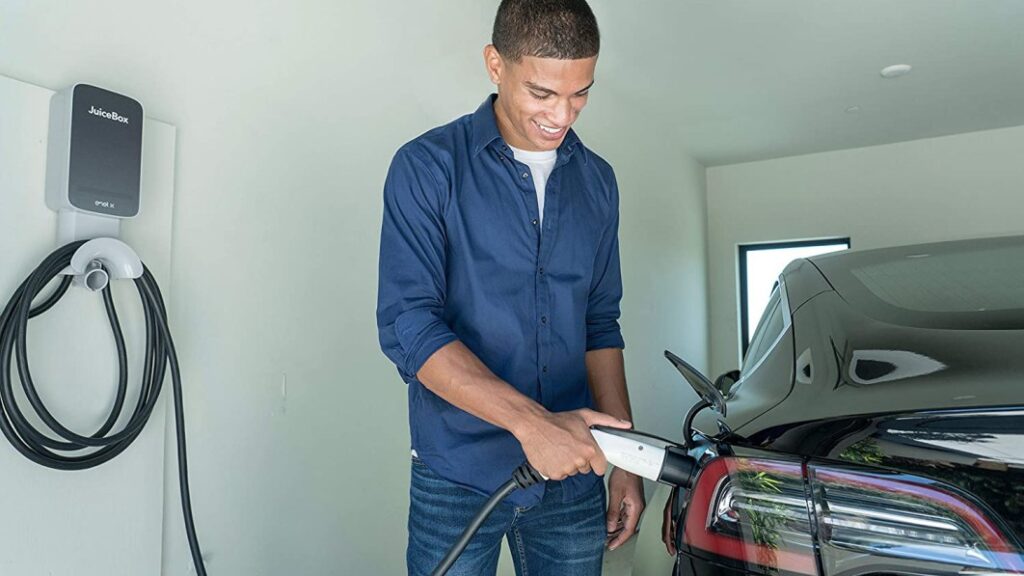These are the best electric cars for high-mileage U.S. drivers

For EV drivers with at-home chargers, every day begins with a full “tank” and little anxiety about needing to top up the car’s battery. But for people who don’t have access to a regular charging spot — and those who drive longer distances — minimizing time at a public charger is key.
Until recently, Tesla Inc. had a lock on charging convenience in the U.S. Not only do the carmaker’s Model 3 sedan and Model Y SUV offer a great deal on range — 330 miles for less than $50,000 — but Tesla’s vast charging network gave owners of its cars exclusive access to two thirds of America’s high-speed chargers. For many EV shoppers, the lack of public chargers took every other brand out of consideration.
That’s about to change. Most automakers will gain access to over 12,000 Tesla Superchargers starting in 2024, which means shoppers will have a lot more to consider when picking an electric model. They may start looking more favorably upon the other 17 EVs on the U.S. market that have a range of more than 300 miles (though only three of those are priced below $50,000).
But choosing an EV isn’t just about how far the car can drive between charges. Equally important, and often overlooked, is how quickly a battery can be replenished. Some EVs can add 100 miles of range in less than a quarter of the time it takes others — even using the same charger. Here, too, Tesla’s supremacy is no longer absolute.
To assess charging speed, analysts at Edmunds recently tested dozens of vehicles in the U.S. by charging them from 10% to 80% at high-speed chargers. They then determined how long, on average, it takes to add 100 miles of driving, based on the real-world driving efficiency for each vehicle. Results ranged from less than 7.5 minutes for the Hyundai Ioniq 6 to almost 35 minutes for the Chevy Bolt EUV. (Tesla’s Model 3 came in sixth, at 10.6 minutes).
“The conversation now is going past range, which dominated for so long,” says Jessica Caldwell, head of insights for Edmunds. “It’s range, it’s infrastructure, it’s how long these cars take to charge.”
Charging an EV battery isn’t as simple as putting a hose in a gasoline tank. To start, some vehicles can accept more power than others. The latest generation of Superchargers is capable of supplying up to 350 kilowatts, for example, but many cars — including Ford’s Mustang Mach-E SUV and F-150 Lightning pickup — top out at less than half of that.
The rate of charging is also constantly changing while you’re plugged in. As an EV battery fills up, it becomes more difficult for electrons to fill in the gaps, and charging slows, a dynamic that can be plotted on a charging curve. This curve, too, varies from vehicle to vehicle.
Finally, time spent at the charger is affected by how efficiently a vehicle uses the energy from its battery. Rivian’s R1S three-row SUV, for instance, uses twice as much electricity per mile as Tesla’s Model 3, according to Edmunds testing.
All of these variables are particularly critical for people who can’t plug in at home. “When you go to more of a mass-market car buyer, they’re going to rely a lot more on public charging than installing one in their home — and then this type of stuff is really important,” Caldwell says.
To get a better overall sense of which cars are best for minimizing time at the charging station, Bloomberg Green came up with a simple method of comparison — let’s call it the Total Battery Score. It’s based on relative performance around two key metrics: time it takes to charge 100 miles and the ratio of vehicle price to total range. We applied this formula to each of the 25 vehicles evaluated in the Edmunds speed test, focusing on the cheapest long-range version of each vehicle. (Some cars haven’t been speed-tested by Edmunds, including Tesla’s Model X, so were excluded from the ranking.)
Here, there was a clear champion for people looking for an affordable car that can go the distance: the Hyundai Ioniq 6. It boasts 361 miles of range for $43,565, including delivery fees. It also has the fastest charging speed from the Edmunds testing, adding 100 miles in just 7.4 minutes.

Hyundai and Kia, the Korean auto giants, took the top 3 spots on the Total Battery Score ranking, followed by Tesla’s Model 3, Model Y and Model S, which score consistently well across the key categories. The new Kia EV9, a boxy full-sized SUV with three spacious rows of seating, took a spot in the top 10 and is in a category of its own for a vehicle of its size.
While the Total Battery Score can be a helpful tool for high-level comparisons, buyers with a specific wish list might want to dig into the details. For example, if cost is no object, the $105,500 Mercedes EQS SUV provides a decent driving range and good charge speeds. If maximum range on a single charge is your only concern, it’s impossible to beat the Lucid Air lineup, which tops out at 516 miles.




